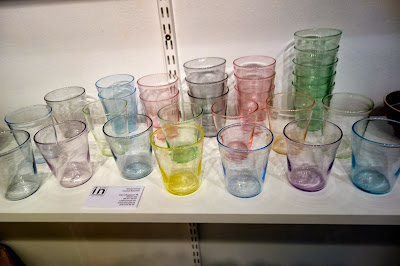You would think after seeing Copenhagen and Oslo, Scandinavian capitals would all seem the same. Wrong! Like children, each capital city has its own unique personality. Stockholm is memorable for the front and center palace, the narrow streets in old town, the Nobel museum, and the immense Sweden-through-the-ages outdoor village.
We started with a self-guided tour of the palace across the boulevard from the harbor.
The courtyard on the backside of the palace opens onto the cobbled streets of Gamla Stan, the historic section of the city.
A stone's throw from the palace courtyard, we visited the Nobel Museum which immortalizes the accomplishments of Nobel prizes winners in medicine, chemistry, physics, economics, and literature. The recipients are notified in the autumn, but the actual prizes are awarded each December 10th in Stockholm on Alfred Nobel's birthday, allowing the Nobel laureates afterward to present their speeches at the Nobel Peace Prize ceremony in Oslo, Norway.
Upon entering the small museum, visitors are greeted by circular glass panels through which tiny points of light shine. The glow symbolizes the illumination of the laureates' work on modern history.
Inside the museum hall, decades are laid out on panels tracing the one hundred years since Alfred Nobel's first prize was awarded. Viewed in this way, visitors can see how the work of each of these 700 creative geniuses has changed 20th century world history.
After leaving the Nobel Museum, we strolled through the picturesque medieval part of Stockholm, Gamla Stan.
We browsed in the numerous shops...and took note of interesting restaurants for later in the evening.
In 1961, the ship was lifted from the sea after resting 333 years on the harbor floor. Seeing the boat in all its glory was impressive. Well, it looked good, even if it didn't float. (Does this remind you of something our government tried to float recently without a test-drive?)
To me living in historic Sweden looks appealing, until I tried to visualize living in one of these homes in the winter without central heat.
After seeing the open air village, Bill and I were quite tired. We had seen a lot in one day. Now we needed some downtime. So, we trudged back to the hotel. After a brief rest, it wasn't easy to walk back to Gamla Stan for supper. But, we were hungry so we dragged ourselves over the cobblestones to the quaint restaurant our friends had recommended, and we had ferreted out in the morning.
The restaurant is appropriately named Five Little Houses because it occupies five tiny, narrow, adjacent homes. I enjoyed lobster, while Bill tried reindeer. Both were yummy. But the best was the warm cloud berries with ice cream for dessert.
What delightful ending to a special day of sightseeing in the unique city of Stockholm.




























0 comments :
Post a Comment